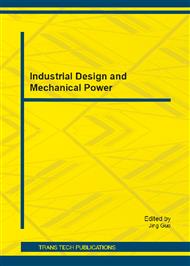p.69
p.73
p.77
p.82
p.87
p.93
p.97
p.101
p.105
A Novel Data Mining Method on Quality Control within Spinning Process
Abstract:
Rough sets theory (RST) is a new data mining method that effectively deals with the problems with inexact, uncertain or vague knowledge in a complex information system. This paper investigates knowledge discovery methods from the textile industrial database, and then presents a RST-based intelligent control model (ICM) for spinning process. In order to analyze the yarn strength when the characteristics of fibers are given, a rule extraction method based on RST is researched. The logical rules extracted from the decision table indicate that the initial strength of fibers is a key factor influencing on the yarn strength. At the same time, the different values combination of the final reduced attributes also obviously influence on the yarn strength in different degree when the certain nominal yarn is being processed. Therefore, RST method can be taken into account for spinners to choose suitable fiber materials in order to ensure the quality and reduce cost.
Info:
Periodical:
Pages:
87-92
Citation:
Online since:
November 2012
Authors:
Price:
Сopyright:
© 2012 Trans Tech Publications Ltd. All Rights Reserved
Share:
Citation:


